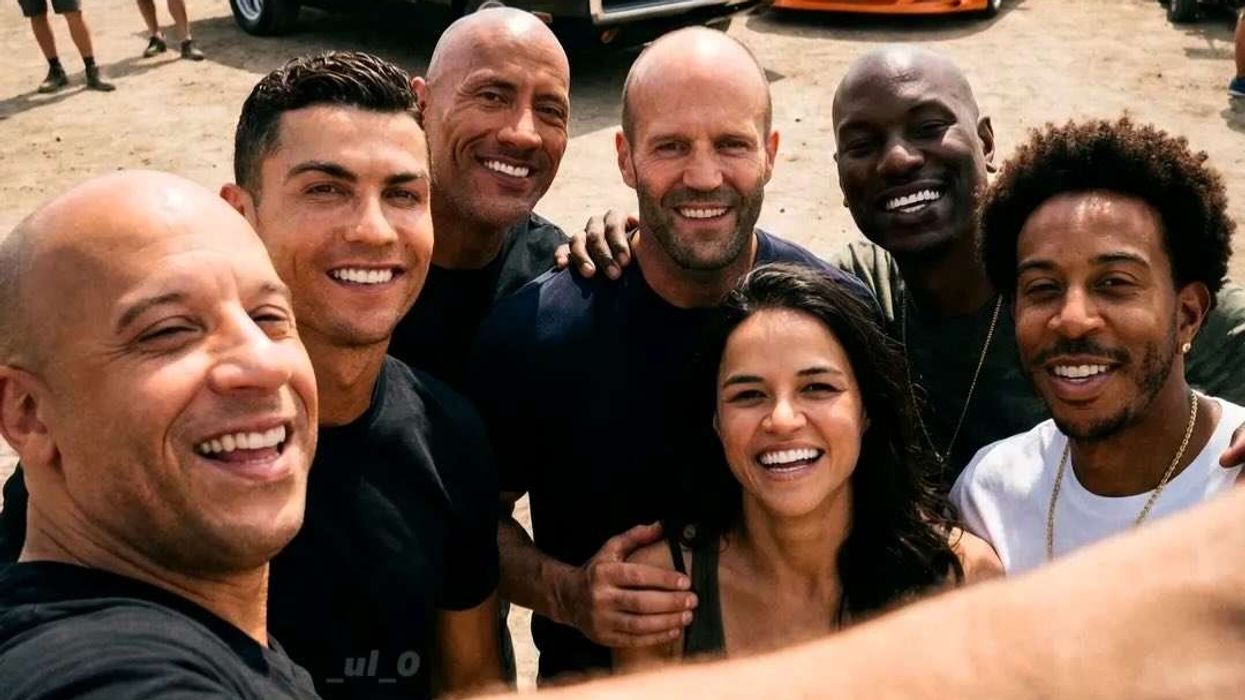by LAUREN CODLING
WHEN Eastern Eye met fitness model and entrepreneur Ninu Galot at a restaurant in west London last month, it seemed strange to think she once hid herself away from the world.
Galot is bubbly, has an infectiously positive attitude and radiates with confidence – but at one point, her self-esteem was so low that she avoided seeing her friends.
This was due to her battle with vitiligo. Vitiligo, a skin condition caused by a lack of melanin, a pigment in the skin, which means white patches can develop across the body, is something Galot has had since she was 11-years-old.
It started out as a small patch on the back of her neck, something her mother initially noticed. She was referred to a dermatologist who recommended she use dermovate, a steroid cream used to treat skin disorders.
The vitiligo didn’t bother Galot. The patch remained there until after university and didn’t appear to have changed shape or size.
“The only thing was at university, I never put my hair up so none of my friends would have known,” she recalled.
“To everyone else, they didn’t know anything about it.”
It was only after Galot graduated and started up her property developing business that the vitiligo started to spread, and she suddenly had patches all over her body. By her early 20s, Galot was “distraught” by the rapid development of vitiligo across her skin.
“I ended up spending all my time crying about it as I didn’t know what else to do,” she recalled. “I had always strived for perfection, and then for this to happen, it throws you off-guard.”
As someone who was known as a happy, sociable young woman, the condition was devastating for Galot. She began to avoid seeing friends and hid herself away in clothes that disguised the patches.
The idea of normal everyday activities, such as attending a family wedding or sunbathing, suddenly became horrifying prospects for her.
“I didn’t want to show [my skin] on the beach when I was sunbathing, so I would
get there at 8am in the morning when no one was around,” she said. “I would cover
my face, it was like blocking myself away from people, like a kid hiding under a duvet when they’re scared.
“When people were walking past me, I’d be thinking: ‘They’re looking at my vitiligo’ but it was okay, I couldn’t see them, I was safe.”
Eventually, after months of emotional turmoil, Galot heard about a type of UV light treatment that could potentially help her – but she would have to fly to Milan to receive it.
She started treatment in October 2004 – and continued to have it on an almost fortnight basis for twelve years.
Although the treatment began to work, it became an “addiction” for Galot. It also could be an extremely painful procedure, that would leave her skin sore and in some cases, blistered.
“I used to come back to the UK and spend three or four days in bed because the skin was so tender and so sore, and I had blisters if they treated it too much,” she admitted.
“I could only take paracetamol afterwards, so I was recovering from the treatment but then going back to Milan again.”
The turning point for the entrepreneur came in 2016, when the vitiligo began to appear on her hands and she realised she couldn’t hide it any longer.
“All the other times, it’s been on places on my body that I could hide,” she said. “It was a wakeup call. I realised I had to face reality – I’ve got vitiligo and I can’t hide it.
“That was hard for me because I thought: ‘I’ve been doing this treatment for so long, it’s been a rollercoaster, it’s got better, and it’s got worse’. But I realised I either had to take control of the situation or let it take control of me.”
She began to attend personal development seminars and read self-help books by author Louise Hay. Moving from Reading to London last January spurred the businesswoman to explore her creative side and she eventually decided to set herself a goal and train for a fitness competition.
Within 16 weeks of hard training with her trainer Savvas and keeping to a strict low-calorie diet, Galot took to the stage at the competition and came in fourth place.
“When I got on stage, it felt like the most natural thing in the world. I thought to myself: ‘If I can do this, I can do anything’,” she smiled. “The day I stepped on stage is the day I set myself free from vitiligo.”
She added: “One night, I stood in front of my mirror and all I saw was my fit body that I’d worked for. Not the vitiligo. I see someone who has trained hard to get the body I always wanted and that is what stands out for me.”
Today, the model has fully embraced the skin she lives in and has realised that after all the years she spent hiding away, she had been her own worst enemy.
“People notice the person I am,” she said. “People have said it makes me unique, but I never saw it like that. We’re our own worst enemies – we overthink and over-analyse but the best thing to do is accept it and let go.”
Now, she hopes to offer a voice for other sufferers of the condition. Last month, she travelled to India to raise awareness.
In India, vitiligo can hinder a girl’s chances of marriage and is seen as a contagious disease by some communities. Of Indian-heritage herself, Galot remarked the more she heard about the stigma, the more it drove her to go and help to change society’s viewpoint on it.
“I wanted to talk about it in the UK, but it didn’t feel right to just walk away from the issues in India regarding vitiligo,” she said. “I wanted to share my experiences and that was a motivator.”
The spokeswoman receives messages regularly from vitiligo sufferers who thank her for coming out and speaking so openly about her condition. The positivity and support is welcome to Galot, who said she would have never imagined herself in this position ten years ago.
“I would say, be real and love yourself. That is the only skin you have, and you only have one life,” she said.
Galot’s next goal is to continue spreading the word and helping to alter the stigma associated with vitiligo. June 25 is a special date for Galot – not only is it World Vitiligo Day but it is also the day she hopes for change in India.
“I don’t know how I’m going to do it, but I have faith in god that it will happen,” she said.
“I used to ask God why he had done this to me, but I realised some things are meant to be. Maybe I’ve got this because I can speak about it and raise awareness. At least if I die tomorrow, people can remember me for trying to make a change.”











